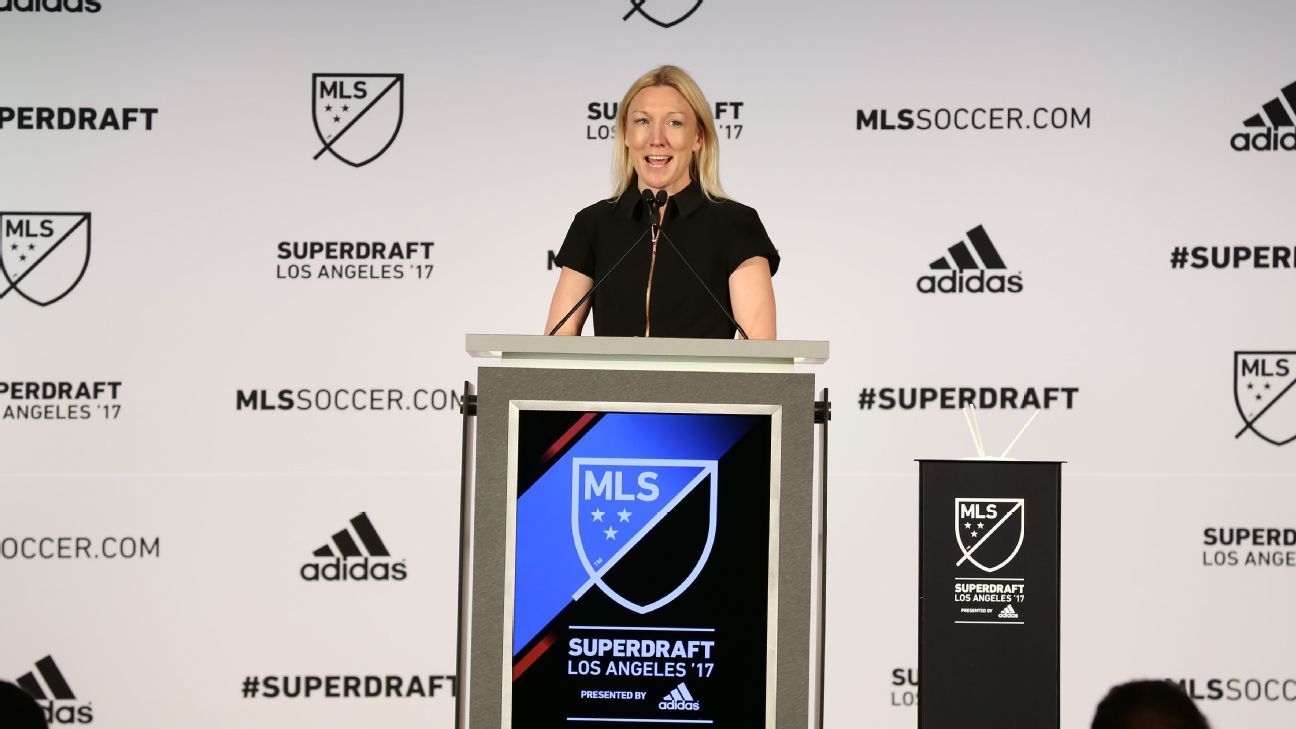Products You May Like
The USL Super League formally announced the eight markets that will take part in the inaugural season set to begin in August 2024.
The markets comprising the nascent women’s league are: Charlotte, N.C., Dallas/Ft. Worth, Tex., Lexington, Ky., Phoenix, Ariz., Spokane, Wash., Tampa Bay, Fla., Tucson, Ariz., and Washington, D.C. More could be added in the weeks ahead.
The USL Super League is also aiming to obtain Division I status from the U.S. Soccer Federation, putting it on par with the National Women’s Soccer League.
– Stream on ESPN+: LaLiga, Bundesliga, more (U.S.)
For USL Super League president Amanda Vandervort, the creation of the league is about meeting demand. She said that while there are over 100 professional men’s teams in the U.S., there are only 12 such teams on the women’s side, leaving what she believes is plenty of room for the two women’s leagues to coexist.
“You’ve got 12 professional women’s teams in this country and amazing cities and fans and players who want to be part of this movement of professional women’s sports,” Vandervort told ESPN. “I think that’s created the opportunity that there is now for the Super League. We’re ready and we’re excited to create that platform for all of those people.”
The USL is already operating the W League, a pre-professional women’s league that began in 2022 and has 65 teams. The plan is for players from that league to feed into the Super League.
“What we’re trying to do is connect talent with opportunity at all steps in a player’s journey,” Vandervort said. “So that infrastructure is important, but the Super League teams are top tier professional teams that stand in their own right.”
Gaining the Division I sanction is a key pillar of the Super League’s plans in that it will open the door to greater sponsorship, media coverage and investment.
Obtaining Division I status requires approval from the USSF’s Board of Directors, which means satisfying the USSF’s Professional League Standards (PLS).
Among the requirements for a women’s outdoor league are that in the league’s first year there must be a minimum of eight teams in the league spread across at least two time zones. At least 75% of the league’s teams must play in metropolitan markets of at least 750,000 persons, and all league stadia must have a minimum seating capacity of 5,000.
Each team ownership group must demonstrate the financial capacity to operate the team for three years, with the principal owner having an individual net worth of $15 million, while the combined individual net worth of the whole ownership group must be at least $25m.
Enforcement of the PLS by the USSF has been a point of contention in the past. The now-defunct North American Soccer League is suing the USSF, arguing the Federation, among other things, altered the PLS in order to prevent the NASL from gaining Division I status — and at times even Division II status — so it would not compete with Major League Soccer.
In this case, the USL Super League would find itself competing against the NWSL for markets, investment, sponsorship dollars and players. There’s also the fact that NWSL commissioner Jessica Berman sits on the USSF Board. But Vandervort expressed confidence that the USL Super League will receive the blessing of the USSF.
“When we first started this process, we already had minimum standards of stadium capacity, ownership net worth and market size,” Vandervort said. “All of the things included in the Professional League Standards and the standards that we had set are Division I standards on the women’s side. So in conversation with our owners and collaboration across the entire group, we’re excited that we qualify for those standards. We’re confident that we will achieve those standards and we’re excited to receive the Division I sanctioning.”
Another feature of the league will be its adherence to the international calendar, with the season beginning in August, taking a break through the winter months, and finishing in June, with an eye on freeing players up for international commitments.
“We’re thinking a lot about that player experience, what it is like to compete at the international level and make sure that we’re facilitating and accommodating the challenges that exist there,” she said.
The USL also announced that it is partnering with global consulting company Octagon to manage its media rights sales process, while Legends, a global venue experience company, will manage the USL Super League’s commercial interests, including national sponsorship sales and stadium commercial opportunities. Of note, Legends is majority-owned by investment firm Sixth Street, which just acquired an NWSL expansion team in the San Francisco Bay Area.
Given that the league has yet to kick a ball, some details still need to be fleshed out. Vandervort declined to specify what the expansion fee that each team is paying, nor did she specify how long the winter break would be. When asked if the league would implement a limit on player salaries, Vandervort said, “It’s not our intention to have a salary cap.”
Another five markets — Indianapolis, Ind., Chattanooga, Tenn., Jacksonville, Fla., Madison, Wisc. and Oakland, Calif. — are set to join the league in 2025 if their respective stadium projects come to fruition.
“I think there is so much potential for the women’s game in the U.S.,” said Lindsay Barenz, the president of USL Championship side the Oakland Roots and W League side, the Oakland Soul, which is aiming to join the USL Super League. “There’s latent fan interest, latent player talent. It’s really time that we give women the opportunity to fulfill that potential. Right now I’m super excited.”
